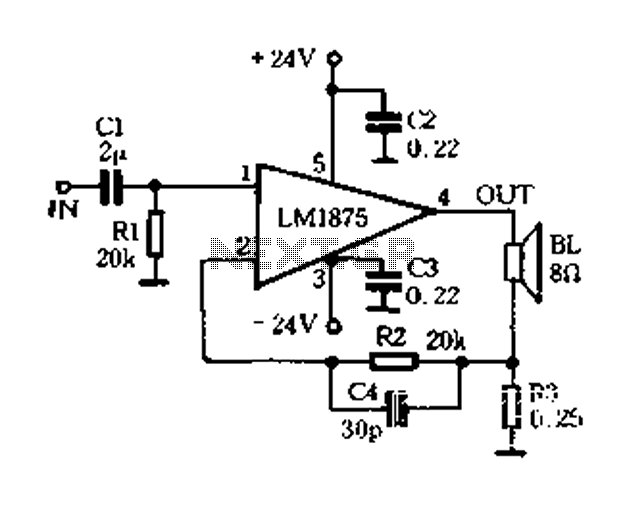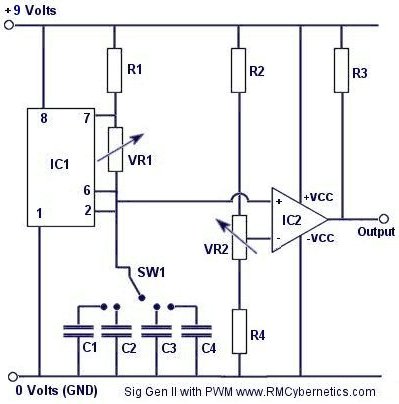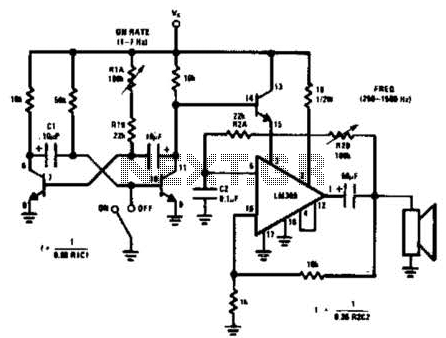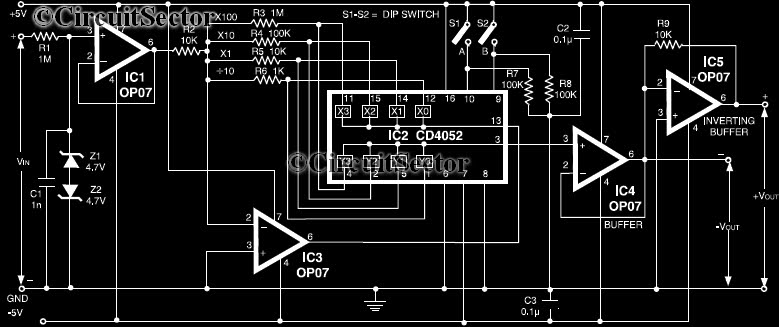
1KHz Square Wave Generator Circuit
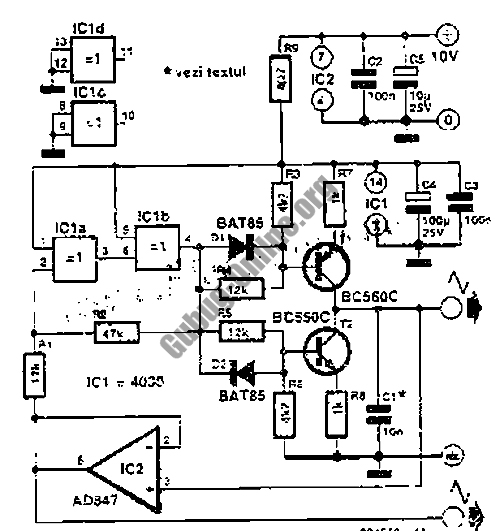
This design outlines a simple 1 kHz square wave generator utilizing a few components and the LM3909 integrated circuit, which is beneficial for testing audio equipment. The circuit operates on a single 1.5V battery cell, producing a maximum output signal amplitude of 1.1V. The symmetry of the square wave signal can be adjusted using potentiometer P1, while potentiometer P2 allows for amplitude adjustment.
The circuit schematic consists of an LM3909 integrated circuit, which is primarily designed for generating timing signals. The LM3909 is configured in astable mode to produce a continuous square wave output at a frequency of 1 kHz. The frequency of oscillation is determined by the values of external resistors and capacitors connected to the IC. Specifically, resistors R1 and R2, along with capacitor C1, set the timing characteristics of the square wave.
The output from the LM3909 is taken from the output pin, which provides a square wave signal with a peak voltage of approximately 1.1V, suitable for interfacing with various audio equipment. The circuit is powered by a single 1.5V battery, making it portable and easy to use in various testing environments.
Potentiometer P1 is connected in such a way that it allows for the adjustment of the duty cycle of the square wave. This adjustment enables the user to modify the symmetry of the waveform, thereby affecting how long the signal remains high versus low during each cycle. Potentiometer P2 is similarly connected to control the amplitude of the output signal, allowing for fine-tuning based on the requirements of the audio equipment being tested.
Overall, this simple square wave generator circuit is an effective tool for generating test signals in audio applications and can be easily assembled with minimal components. The compact design and low power requirements make it ideal for portable testing setups.Here`s a design for a simple 1KHz square wave generator using a few components and the LM3909 that is useful for testing audio equipment. The circuit is based from the IC. It is powered from a single 1. 5V battery cell and the maximum amplitude of the output signal is 1. 1V. With P1 you can adjust the symmetry of the square wave signal and with P2 th e amplitude. This is the figure of the circuit; 🔗 External reference
The circuit schematic consists of an LM3909 integrated circuit, which is primarily designed for generating timing signals. The LM3909 is configured in astable mode to produce a continuous square wave output at a frequency of 1 kHz. The frequency of oscillation is determined by the values of external resistors and capacitors connected to the IC. Specifically, resistors R1 and R2, along with capacitor C1, set the timing characteristics of the square wave.
The output from the LM3909 is taken from the output pin, which provides a square wave signal with a peak voltage of approximately 1.1V, suitable for interfacing with various audio equipment. The circuit is powered by a single 1.5V battery, making it portable and easy to use in various testing environments.
Potentiometer P1 is connected in such a way that it allows for the adjustment of the duty cycle of the square wave. This adjustment enables the user to modify the symmetry of the waveform, thereby affecting how long the signal remains high versus low during each cycle. Potentiometer P2 is similarly connected to control the amplitude of the output signal, allowing for fine-tuning based on the requirements of the audio equipment being tested.
Overall, this simple square wave generator circuit is an effective tool for generating test signals in audio applications and can be easily assembled with minimal components. The compact design and low power requirements make it ideal for portable testing setups.Here`s a design for a simple 1KHz square wave generator using a few components and the LM3909 that is useful for testing audio equipment. The circuit is based from the IC. It is powered from a single 1. 5V battery cell and the maximum amplitude of the output signal is 1. 1V. With P1 you can adjust the symmetry of the square wave signal and with P2 th e amplitude. This is the figure of the circuit; 🔗 External reference
